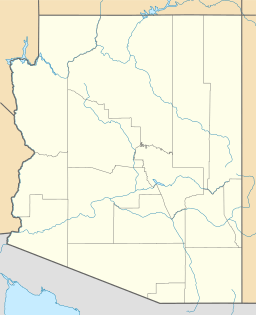Huerfano Butte (Arizona) facts for kids
Quick facts for kids Huerfano Butte |
|
|---|---|
| Huerfano Butte | |

Huerfano Butte from the northwest.
|
|
| Highest point | |
| Prominence | 3,992 ft (1,217 m) |
| Geography | |
| Location | Tucson, Arizona |
| Parent range | Santa Rita Mountains |
Huerfano Butte (which means "Orphan Butte" in English) is a small, rocky hill. It is located in Pima County, Arizona. This butte is found on the western side of the Santa Rita Mountains.
Huerfano Butte stands about 3,992 feet (1,217 meters) tall. It is a major landmark in the large Santa Rita Experimental Range. This area covers about 52,000 acres. The butte is also a very important place for learning about ancient history. Many old artifacts have been found here.
Contents
Discovering Ancient History at Huerfano Butte
Huerfano Butte and the land around it were used by the Hohokam people. They lived here as early as the year 1100 CE. A small pool of water forms on the south side of the butte. This happens because underground water is forced to the surface by shallow rock.
Tools and Art from the Past
Near this water pool, there are large rocks with about fifty bedrock mortars. These are bowl-shaped holes used for grinding plants or seeds. There are also at least two smaller bedrock metates, which are flat grinding stones. Many tiny cup-shaped holes, called cupules, are also found here.
Along the same area, there is a vertical rock surface. It has about two dozen old pictographs painted in red. Pictographs are pictures painted on rock. These pictures show human and animal shapes, plus circles. They are covered in a natural coating called "desert varnish."
The Amazing Jewelry Discovery
In 1965, Huerfano Butte became famous. A young girl was on a picnic with her family. She was exploring cracks in the butte when she made an amazing find. She discovered a small pottery jar filled with about 1,500 beads and pendants. These were made from turquoise and glycimeris shells.
The pottery jar and its lid were given to the Arizona State Museum. Experts figured out they were made around 1100 CE. The pottery was identified as Gila plainware from the Rincon phase.
Today, you need special permission to visit Huerfano Butte. This helps protect the important historical items found there.
Gallery
-
Huerfano Butte from the east in 1902. Notice the grassland, which has since turned into a desert of mesquite, prickly pear and cholla.
-
View of the Sonoran Desert from Huerfano Butte. The southern end of the Santa Rita Mountains can be seen in the background.










